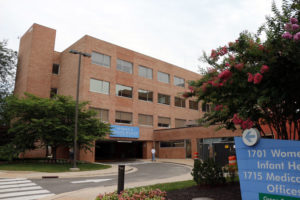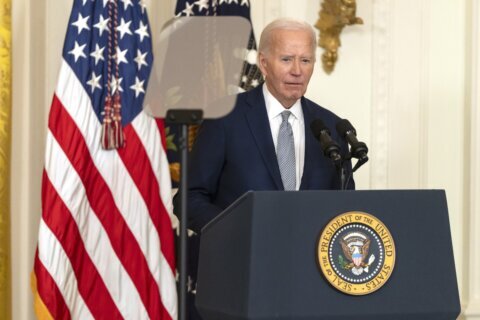 Need evidence that more and more young families are putting down roots in Arlington, beyond the rapid growth in school enrollment? Just look to Virginia Hospital Center.
Need evidence that more and more young families are putting down roots in Arlington, beyond the rapid growth in school enrollment? Just look to Virginia Hospital Center.
The hospital, at 1701 N. George Mason Drive, completed a four-year-long renovation of its maternity ward earlier this year, adding beds and capacity to keep up with rising demand. But the number of births at the hospital continues to grow.
In the last five years, the hospital has gone from delivering 3,700 infants in 2008 to a projected 5,000-plus in 2013. In that time, the hospital’s Women & Infant Health Center has added 10 beds, formed a partnership with National Children’s Hospital to expand its Neonatal Intensive Care Unit, and reorganized the Labor and Delivery unit to add additional capacity.
The growth in birth rate “has been pretty substantial for our size,” Adrian Stanton, Virginia Hospital Center’s vice president of public affairs, said. To accommodate the expansion, some administrative offices were moved to the hospital’s Carlin Springs Road campus.
“Years ago, this was [considered to be] a mature market,” Stanton said. But that has changed, and hospital leaders still aren’t sure how much bigger the Arlington baby boom will get.
“There isn’t a desire to move west or south as there had been. There’s more of an appeal to the Arlington area for young families,” he said. ”I think we are struggling with the question, how much will Arlington continue to grow? Where is the growth going to be? I’m looking at the schools’ numbers, the planning departments numbers to try to figure it out.”
Stanton said there is still some room to grow for the maternity unit, but any expansion has to be done “in place,” since there are no plans for major construction projects on the horizon. The hospital’s unsolved problem is akin to Arlington’s high schools, which have all completed renovations in the last couple of years but remain overcrowded.
Stanton has identified one possible source of the upward trend in births, noting anecdotally that many families seem to want three children, as opposed to last generation’s average of two and a quarter children per household.
In addition to childbirth, another area of significant growth for Virginia Hospital Center has been joint replacement. The bulk of the joint replacement patients: active baby boomers in their 50s and 60s. Could the growth in joint replacements and childbirths be linked?
Asked whether it was perhaps the “echo boom” generation — the children of post-World War II baby boomers — who were accounting for the growth in births locally, Stanton wasn’t sure. But he did say that the baby boom generation in general has impacted hospital planning.
“As the baby boomers move through the system, they dictate a lot of what happens in society,” he said.







